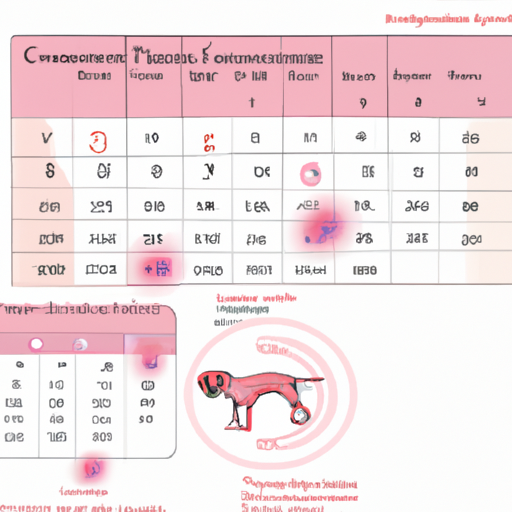As a caregiver to your furry friend, you’ve probably discovered that being a pet parent involves more than just walks in the park and cuddle sessions. One of the crucial aspects of pet ownership, particularly for those who own female dogs, is understanding the heat cycle. This article will delve into the specifics of a dog’s first heat cycle, focusing on the all-important question: How long do dogs stay in heat the first time?
Table of Contents
- Understanding the Heat Cycle
- The First Heat Cycle
- Signs and Symptoms
- How to Care for a Dog in Heat
- Frequently Asked Questions
Understanding the Heat Cycle
Just like humans, dogs undergo hormonal changes that prepare their bodies for reproduction. This cycle, commonly known as being “in heat” or “estrus,” typically begins when a dog is between six and 24 months old, depending on her breed and size. Smaller breeds tend to start earlier, while larger breeds might not have their first cycle until they’re two years old.
The heat cycle lasts on average between two and four weeks, but this can vary from dog to dog. It’s important to remember that your dog’s first heat cycle is a major physiological change, and she may act differently than usual.
The First Heat Cycle
Surprisingly, a dog’s first heat cycle is often shorter than subsequent cycles, typically lasting between two and three weeks. During this period, your dog is receptive to mating and can become pregnant, although breeding is not recommended during the first heat.
The first heat cycle is broken down into four stages, each with its own distinct signs and symptoms:
- Proestrus: Lasting between three and 17 days, this is the start of the heat cycle. Your dog may start attracting male dogs, but she is not yet receptive to mating.
- Estrus: This is the period when your dog is fertile and receptive to mating. It typically lasts between five and nine days.
- Diestrus: This is the period after mating. It can last between six and ten weeks, whether your dog is pregnant or not.
- Anestrus: This is the period of sexual inactivity between heat cycles, typically lasting between three and four months.
Understanding these stages can help you better care for your dog during her first heat cycle and anticipate potential changes in her behavior.
Signs and Symptoms
Recognizing the signs of your dog’s first heat cycle can help you provide the best care possible. Some of the most common symptoms include:
- Swelling of the vulva
- Bloody or straw-colored discharge
- Increased urination
- Changes in behavior
It’s important to note that some dogs may experience what’s known as a “silent heat,” where the usual signs are less noticeable. For more information on silent heats, check out this article.
How to Care for a Dog in Heat
Caring for a dog in heat requires a bit of extra attention and patience. Here are some tips:
- Monitor her behavior: Keep an eye out for changes in her behavior or physical symptoms that might indicate she’s in heat.
- Keep her indoors: To avoid unwanted attention from male dogs, it’s best to keep your pet indoors as much as possible during this time.
- Use doggy diapers: To manage the discharge that comes with the heat cycle, consider using doggy diapers or protective covers.
For more in-depth advice on caring for a dog in heat, visit this page.
Frequently Asked Questions
1. How often do dogs go into heat?
On average, dogs go into heat twice a year, but this can vary between breeds and individual dogs.
2. Can my dog get pregnant during her first heat?
Yes, a dog can get pregnant during her first heat, but breeding is not recommended at this time.
3. How can I tell if my dog is in heat?
Common signs include swelling of the vulva, bloody or straw-colored discharge, increased urination, and changes in behavior.
4. How can I make my dog more comfortable during her heat cycle?
Keeping your dog indoors, using doggy diapers, and giving her extra attention can help make her more comfortable.
Remember, every dog is unique, and your pet may not follow the exact timeline or exhibit the same symptoms as others. As a responsible pet owner, the best thing you can do is to stay informed about your dog’s reproductive health. For more information on understanding your dog’s behavior, check out this article.
In conclusion, a dog’s first heat cycle is a significant milestone in her life. By understanding the process and providing the right care, you can help ensure her well-being during this time.



